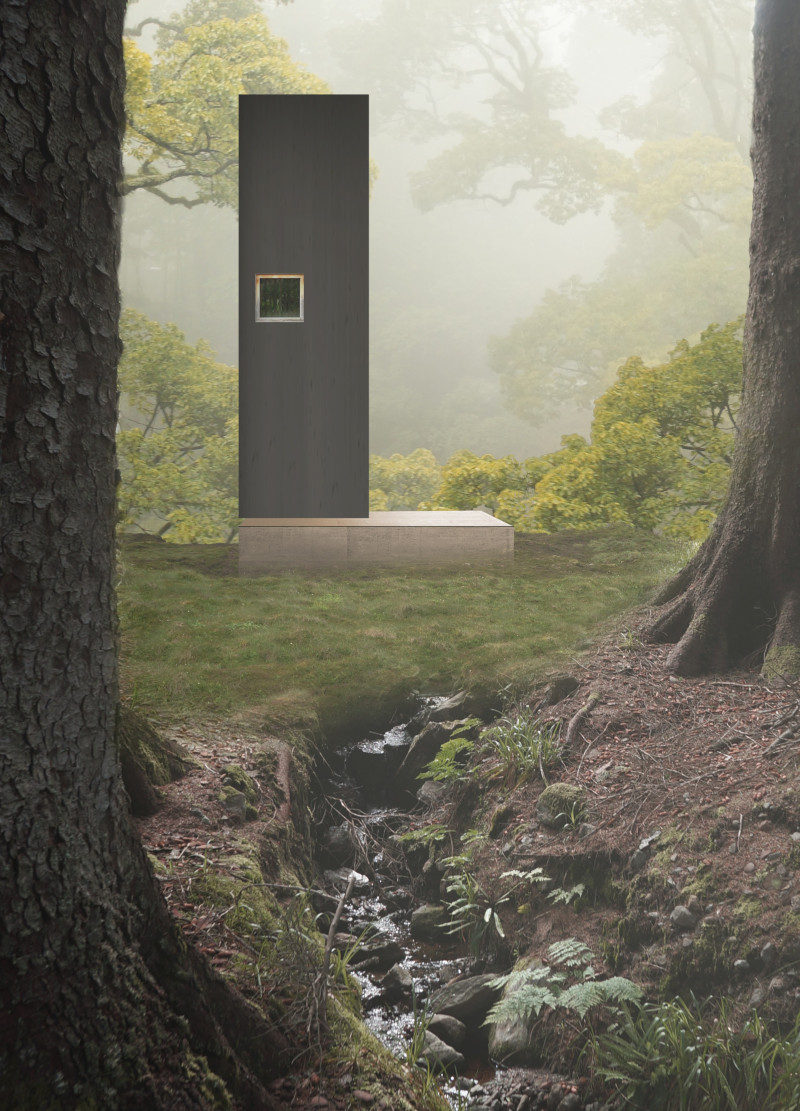5 key facts about this project
The Forest Temple serves as a multifaceted retreat, providing a space for quiet contemplation, spiritual practice, and connection to the environment. It is structured to facilitate a gradual transition from the external forest into a tranquil interior, marked by the use of minimal and natural materials. The primary components of the design include a central tower, a fire area, a reflective pool, and carefully placed windows that encourage interaction with the surrounding forest.
Unique Design Approaches
One of the most distinctive aspects of the Forest Temple is its use of locally sourced and traditional materials. The project incorporates structural plywood and charred wood in construction, chosen for their sustainability and aesthetic qualities. The charred wood not only provides a striking visual texture but also enhances durability. This approach emphasizes a relationship with the landscape, reinforcing the concept of timelessness and respect for local craftsmanship.
The architectural layout is intentionally simple, featuring a streamlined design that eliminates excess. By focusing on essential elements such as light, space, and material, the Forest Temple creates an environment conducive to meditation. The inclusion of a single window and an oculus at the roof allows natural light to filter through, promoting a dynamic interaction with the outside environment throughout the day. This design choice reflects an understanding of the sensory experience, facilitating a visual and emotional connection to nature.
Interior Elements and Spatial Experience
The interior of the Forest Temple is characterized by a series of interconnected spaces designed to facilitate relaxation and reflection. The arrangement crafts distinct zones within the structure, promoting diverse uses while maintaining a cohesive architectural language. Features such as tatami matting on the floor enhance the visitor's connection to traditional practices, adding warmth and comfort to the environment.
The focal points within the space—the fire pit and the pool—serve both functional and symbolic purposes. The fire pit provides warmth and an area for gathering, while the water feature reflects light and surrounding greenery, contributing to a calming atmosphere. This interplay of elements aligns with the project’s goal of creating a holistic experience where architecture, nature, and meditation coexist seamlessly.
For a comprehensive understanding of the architectural design, readers are encouraged to explore the project presentation, including architectural plans and sections. These resources provide deeper insights into the design methodology and the unique architectural ideas that shape the Forest Temple.


























